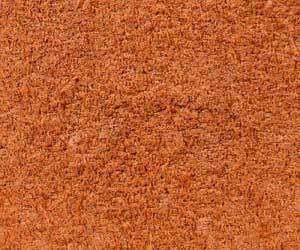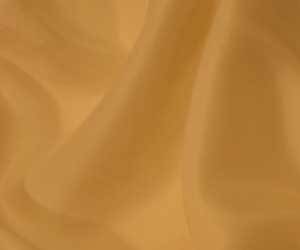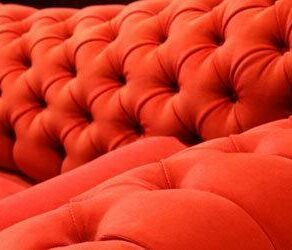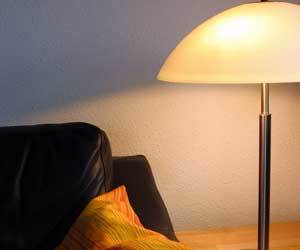Sherrill asked, “How to clean fabric chairs?”
Fabric  furniture, also known as upholstery or upholstered furniture, seems difficult to clean at a glance. You certainly can’t toss your couch in the washing machine (or the pool – do NOT toss your couch in the pool!). However, there are a variety of tricks that can be used to clean fabric on furniture, as well as remove any odors that may be in the cushions.
furniture, also known as upholstery or upholstered furniture, seems difficult to clean at a glance. You certainly can’t toss your couch in the washing machine (or the pool – do NOT toss your couch in the pool!). However, there are a variety of tricks that can be used to clean fabric on furniture, as well as remove any odors that may be in the cushions.
Determine What’s Safe
The first step is to determine what type of fabric you have or rather, what type of cleaning method is safe for the type of fabric you have. Some couches and chairs have a tag on them underneath near a corner or edge. If you can carefully flip the couch to read the tag, that would be best. If not, here are some other ways you can tell.
- Code S upholstery refers to organic fabrics, such as cotton, velour, wool, rayon, silk and denim. These fabrics should not be cleaned with water, only solvents (hence the ‘S’), and we have a special guide for it – see it here: How to Clean Code S Upholstery.
- Code W upholstery refers to fabric that can be cleaned with water, and usually contains synthetic fabrics like polyester, olefin, nylon, herculon and acetate. There are still some important things to know about cleaning code W upholstery, but you’re in the right place – keep reading below.
- Other upholstery codes are W/S, which are the easiest to clean as they can tolerate both water and solvents, and code X, which can’t be cleaned with any water or solvent. If you have code X, you can use some of the dry methods of cleaning below, such as powder or sunlight.
If you can’t find the tag or aren’t sure what type of fabric it is, test a small hidden area to find out if water is safe (allow the area to fully dry before assessing the results, a hair dryer on cool air can be used to speed the drying time) or use one of the non-liquid methods listed below. There are many different methods for cleaning upholstery, especially when water is an option. Select the method that is best for you and if it fully clean the fabric, try a different method.
Cleaning with Water
Washing the Cushions
- Check the cushions to see if the fabric is actually a pillowcase (and therefore can be removed and washed). If so, remove the cushion covers and put them in the washing machine on the gentlest cycle possible. Use only cold water and mild detergent.
- To dry the covers, they can either be hung to air dry or put in the no heat cycle of the dryer. It is important to avoid heat because if the covers shrink even a little, they won’t fit back on the cushions properly.
- The cushions themselves can be cleaned in the bathtub if needed, however for foam cushions it is best to avoid washing them if possible because they are very difficult to dry. Instead, either use the Sunlight Method or Powder Method below to kill surface bacteria and deodorize them. If a liquid has soaked into the cushion, such as urine or soda, they should not be washed but rather cleaned using the method in the guide How to Remove Urine from Memory Foam. If the cushions absolutely must be washed, use the guide How to Clean Foam Cushions.
Washing the Non-Removable Fabric
- For areas where the fabric is not removable, mix some mild dish liquid in a bowl of water and stir the mixture well to create suds.
- Skim the suds off the top of the water with a cloth and gently rub the fabric with them to clean it. Try to avoid getting much water on the cloth, and just try to get the suds.
- Wet the cloth with only water and wring it out so it’s damp, not dripping, then wipe the area to rinse.
- Repeat the process as many times as needed to clean the fabric. It helps to use a coffee stir stick or fork to agitate the water and create more suds when needed.
- Point a fan on the area or use a hairdryer on cool air to dry the fabric faster to prevent water stains.
Cleaning with Sunlight
A water-free method that works well is to take the item outside and put it in the sun for an hour. Sunlight will kill bacteria on the surface of the fabric and the fresh air will help to deodorize the cushions as well. Rotate or flip the cushions/chair as much as possible half-way through to get sunlight on each side. Do not leave the item out for more than a couple hours as sunlight can cause fading of some fabrics. If the fabric is white, leaving it out for longer than a couple hours may have a beneficial bleaching or whitening effect.
Cleaning with Powder
Another easy water-free method to clean the fabric is simply to sprinkle a generous amount of either cornmeal or baking soda over it. Let the powder sit on the fabric for an hour, then vacuum it up. The powder will absorb any dirt or oils that are on the fabric. If using baking soda, you will have the added benefit of deodorizing the cushions as the baking soda is a strong natural deodorizer. This process can be repeated as many times as needed.
Cleaning with Foam
If there are any particularly dirty areas on the chair, an upholstery foam can be used. These products can often be found in the cleaning aisle, however an alternative that you may already have at home is white foam shaving cream. Be sure to test any product on a small hidden area of the fabric first to ensure it doesn’t cause any unwanted affects.
Steps to Clean with Foam:
- To use the shaving cream, spray a small amount on a cloth and gently rub it into the dirty area of the fabric.
- Wipe off any excess foam when the area is clean. It is not necessary to rinse.
- If you would prefer to use a store-bought upholstery foam, follow the instructions on the label of your selected product.
- Doing this is only meant as a spot cleaning technique, however, if the fabric really needs to be cleaned all over it can be used that way as well.
- If using the foam all over, it’s best to wipe the fabric with a damp cloth (wring it out so it’s only damp, not dripping) several times to rinse off as much of the
- residue as possible. Although rinsing is not necessary for upholstery foams, it can lead to the fabric becoming dirtier faster because the dirt will stick to the area.
Removing Stains from Upholstery
Stains on upholstery can be scary, but if you have the right remover, they can often come out. Below are some guides for common stains, and many more stains can be found by searching through the site, including many unusual stains like kerosene, tar or cooking oil.
- How to Clean Wax Spills from Upholstery
- How to Remove Marker from Upholstery
- How to Remove Chocolate Stains from Upholstery
- How to Remove Juice Stains from Upholstery
- How to Remove Burn Marks from Upholstery
Additional Tips:
- If someone who uses the couch has bathroom problems (dog, child, grandparent, etc.), remove the seat pillowcases, put the cushions in plastic trash bags, then put the pillowcases back on. Doing this will allow you to simply wash the pillowcases as needed without worrying about the cushions.
- The cushions can also be wash if needed, but it is best to avoid that if at all possible as the cushions are very difficult to wash and even more difficult to dry.
- Applying a stain repellent spray to the upholstery can help prevent future stains.









Leave a reply